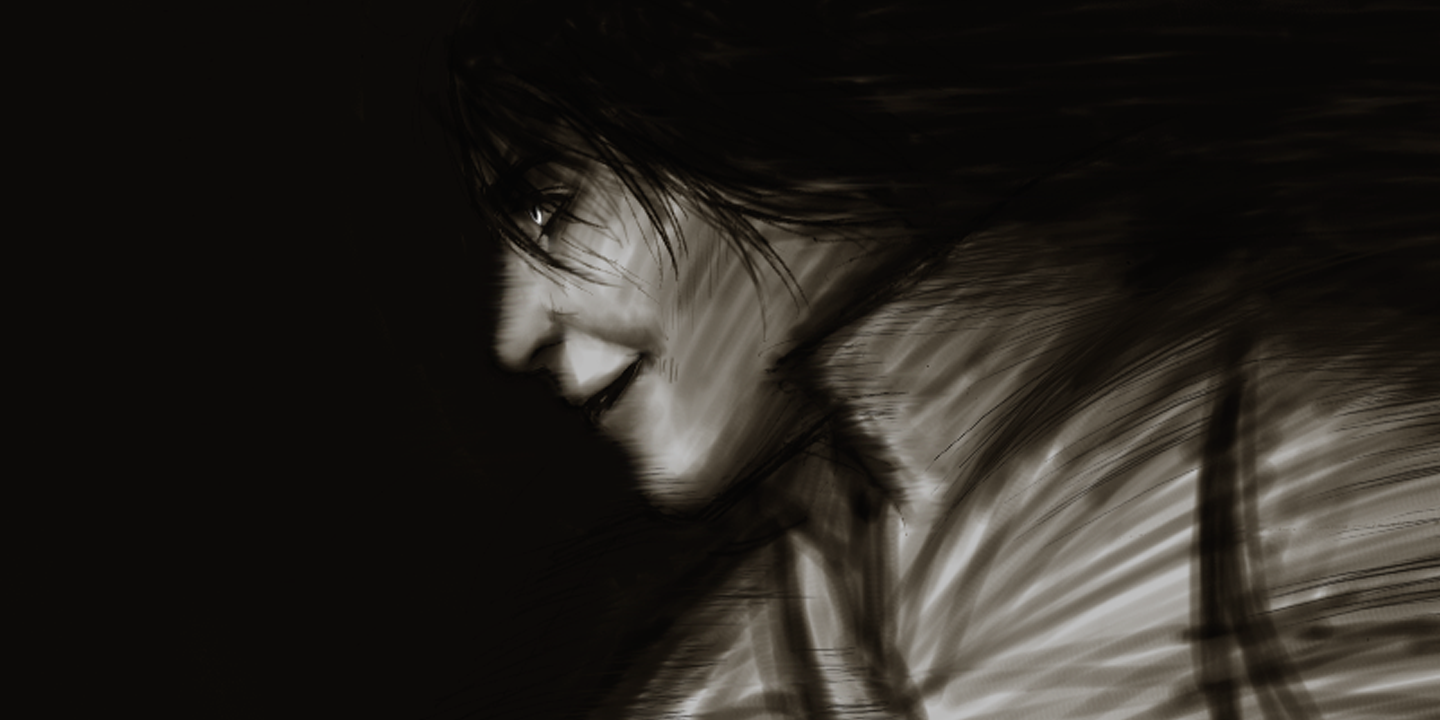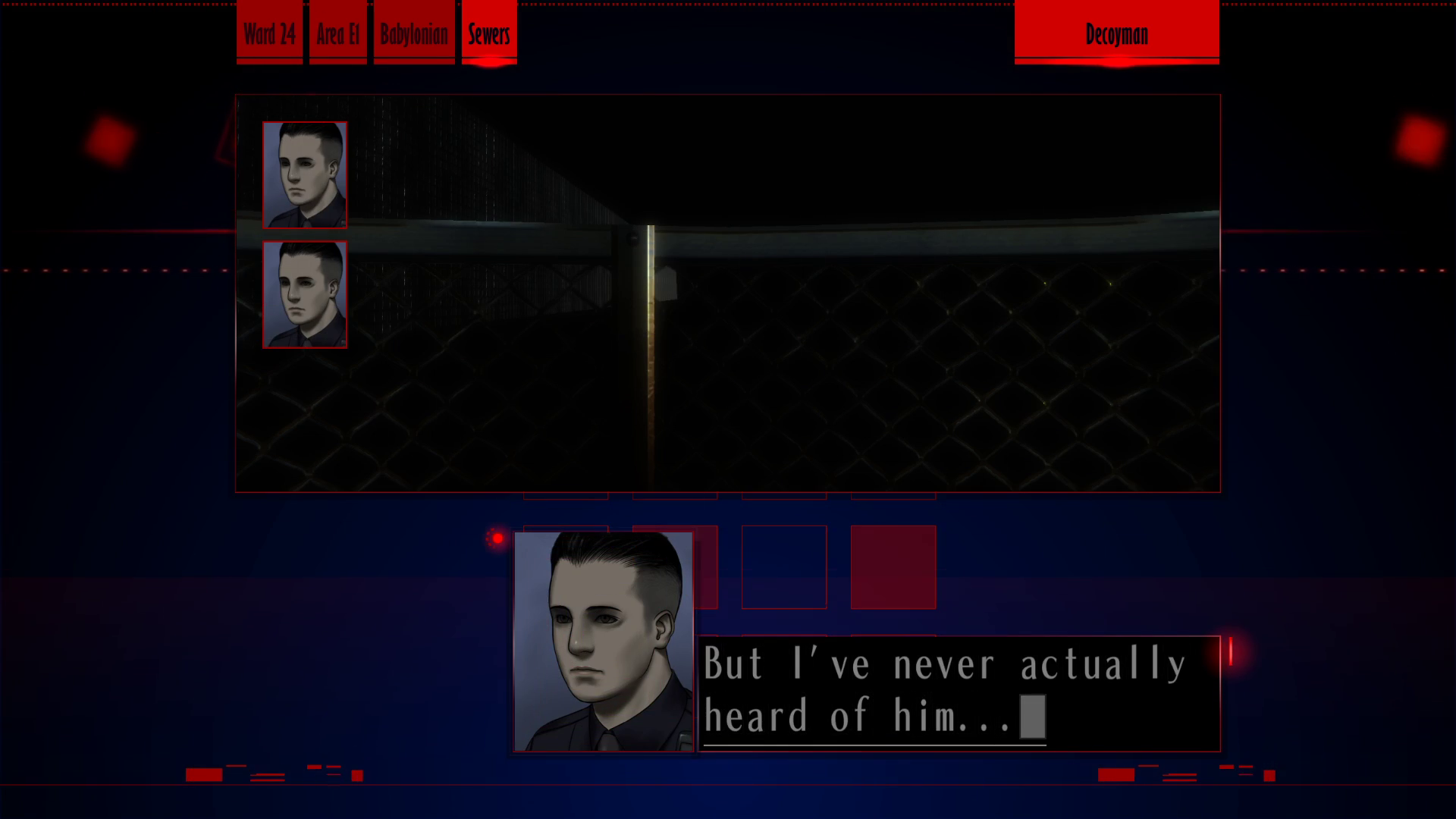This essay features extensive “spoilers” for The Silver Case and the following:
Moonlight Syndrome
Case #4.5: Face
Flower, Sun, and Rain
The 25th Ward: The Silver Case
killer7
Samurai Champloo: Sidetracked
Travis Strikes Again: No More Heroes
Videodrome
There is also some discussion of No More Heroes and No More Heroes III.
All the same content warnings apply to the material discussed here as in the Kusabi video: blood, gore, dismemberment, murder, rape, child abuse, incest, suicide, more or less every potentially upsetting subject.
Relevant screenshots do not come from the original releases of any of these video games but from their Windows ports or remakes, with the exception of Flower, Sun, and Rain, screenshots of which all come from the 2008 Nintendo DS remake. These are the versions cited.
Moon over 24

The Silver Case opens with screens of text that introduce the Kanto 24 Wards police state in a cold, bureaucratic manner befitting the brutality of its administration. Kamui is established in the same sentence as Kusabi: “Silver Case head and former Regional Special Agent, also known as ‘the man who arrested Kamui’, 24 Area Second Heinous Crimes Division Special Agent [Kusabi Tetsugoro] was on his way home.” Rumi, one of the titular “lunatics,” refers to Kamui as a god and “KAMUI THE HOLY HUNTER.” Two months later, “Decoyman,” in extreme contrast, features Kamui as a vegetative patsy framed for serial murders. In the Placebo storyline, Morishima Tokio’s primary goal is to gather information about Kamui. But every new “truth” and every lead only raises further questions. In the end, both Akira and Tokio turn out to have been Kamui all along, but also the person named Kamui who appears “Decoyman” is Kamui, while Kamui is also an unrelated person who killed the old men in 1979 but whom the old men killed instead, but also he is still alive.
The player may identify with the two policemen in “Decoyman” who ponder Kamui:

“I don’t really know either, but apparently he’s some top secret serial killer.”

“But I’ve never actually heard of him…”

“It was all just rumors before. Nobody thought he was actually a real person.”
The inhabitants of the 24th Ward are as confused as the player. On startup, Kamui’s face flashes on the title screen, as though, with his silver gaze, to confront the player with the story’s key question, asked in the documentary that plays in “LifeCut”: “Just what exactly is [Uehara Kamui]?”

Kamui is introduced to the player in the same breath as Kusabi. In The 25th Ward, the cumulative events of The Silver Case are referred to as the “Kamui Incident.” Kamui is a big deal. Though always absent, Kamui’s presence looms over The Silver Case like the moon that closes each case and report. When Kusabi talks about Kamui at the end of “Lunatics,” he does so beneath a conspicuous full moon. In “YUME,” Enzawa Kaiji, the shelter administrator, claims that Kamui “looked like the moon.” In “KamuiDrome,” Nakama, persuading Furuya to become an imitation Kamui, promises her lover, “You’re going to become the moon.” In The Silver Case the moon is associated with Kamui. Given the prominence of this satellite across the Kill the Past series, this suggests Kamui’s broader centrality. The frequent changes in the moon metaphor between titles, however, also indicates the amorphousness of Kamui’s meaning. As Hugh Smith writes in the essay “Observations” published in the first 2018 Grasshopper Manufacture Zine, the moon represents a surveillance of the occult, criminal world of the night. However, this does not necessarily mean the moon is the authorities’ surveillance: in The 25th Ward, Kamui, or at least his apprentice Kurumizawa, is the force monitoring all the action.
Andrew Piechota, in “this monstrous soul-life,” correctly identifies Kamui as central to the Kill the Past series. “Kamui,” Piechota writes, “is explained or implied, at different points, to be either a bloodthirsty ghoul, hired assassin, otherworldly avatar of evil, unwitting patsy, ageless immortal clone, hypnotically-implanted persona-trigger, possessive spirit, or simply an ultimately-insubstantial anthropomorphization of the phenomenon of violence—and possibly all of these at once” (4–5). This analysis, while correct, misses the ultimate nature of Kamui in The Silver Case as perhaps an anthropomorphization of violence, yes, but of liberatory, transformative violence.